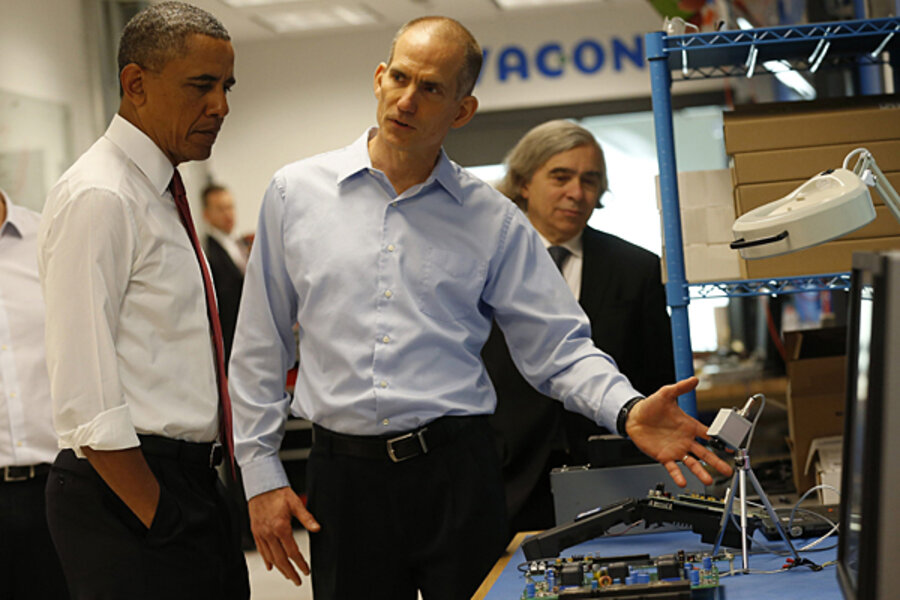5 new ways Obama could jumpstart clean energy
Loading...
A group of energy experts released a thick report that details a laundry list of ways that the President can take executive action to push clean energy forward without the need for congressional action. Led by former Colorado Governor Bill Ritter, the report published by the Center for the New Energy Economy (CNEE) was inspired by a meeting Ritter had with President Obama and other clean energy leaders last year, in which the President solicited advice on how he could lawfully accelerate the deployment of clean energy. Ritter’s document, “Powering Forward,” lays out over 200 recommendations.
The recommendations fall into five categories: energy efficiency; cleantech finance; natural gas production; integrating clean energy into the grid; and alternative fuels and vehicles.
The recommendations vary from the not-very-new (use federal procurement to purchase energy efficient goods and services), the vague (streamline regulatory process X to speed up deployment of Y), and the all too often recommendation that calls for a new report that will issue future recommendations. (Related article: Harvard Research Team has Breakthrough on Battery Storage)
However, there are a bunch of interesting ideas as well.
• For example, the report suggests modifying mortgage rules such that qualifying for federally backed mortgage loans would require new homes be constructed with updated energy efficiency standards.
• Gov. Ritter’s report argues that there are significant environmental benefits of increased natural gas production, but calls for a national methane leak-reduction strategy in order to reduce emissions in the drilling process. Such a strategy would be spearheaded by the White House in collaboration with the states in order to “reach an agreement on guidelines that indicate a ceiling on the amount of methane that can be released from the natural gas value chain while retaining the resource’s advantages over coal and oil in regard to greenhouse gas emissions.”
• While light on some detail, the report suggests the Federal Energy Regulatory Commission (FERC) issue new regulations that incorporate the administration’s objectives on greenhouse gases. For example, FERC could approve premiums for return on investment rates for transmission projects to those that meet clean energy and climate goals.
• Ensuring grid reliability while integrating clean energy is a hot topic in energy circles these days, with many predicting the declining importance of the centralized utility in the coming years. The CNEE report tries to strike a balance, arguing that utilities are key to a “21st Century electricity grid,” but that they need to evolve to incorporate more distributed generation. In this regard, the report believes the Tennessee Valley Authority – a corporation owned by the government – can act as a laboratory for the “future of the utility” by transitioning to cleaner energy while decoupling profits from electricity sales.
• Finally, on alternative fuels, CNEE calls on the White House to develop clear national objectives, which prioritize performance over fuel-specific policies. This would seem to hint at overhauling policies of the recent past like the renewable fuels standard and since-expired subsidies for ethanol.
While there is a lot to the 200-plus page document, and many of the recommendations will never be implemented, they do provide some clues to what the administration might be thinking as it tries to implement the President’s Climate Action Plan. Unlike other think-tank documents that often get lost in cyberspace after publication, it appears Ritter’s group had the interest of the President from the outset, and given that the launch event featured Obama’s former climate adviser, Heather Zichal, one can assume the report is being widely read inside the White House.
Original article: http://oilprice.com/Alternative-Energy/Renewable-Energy/Energy-Experts-Call-for-Executive-Action-on-Clean-Energy.html







